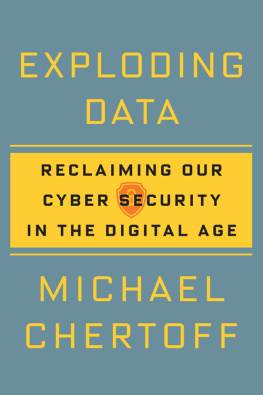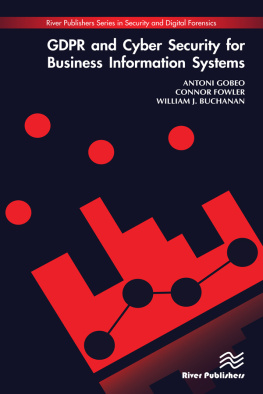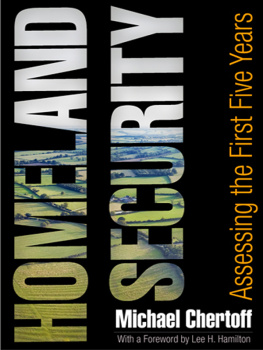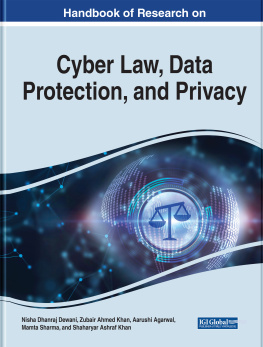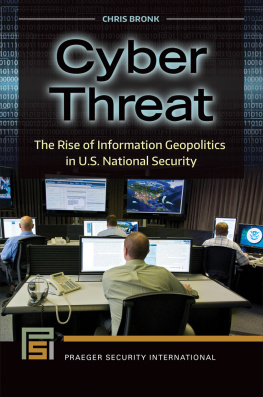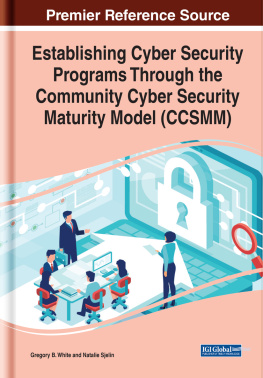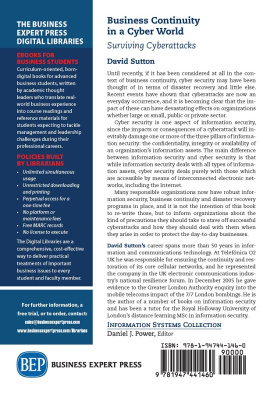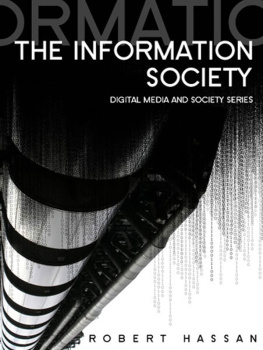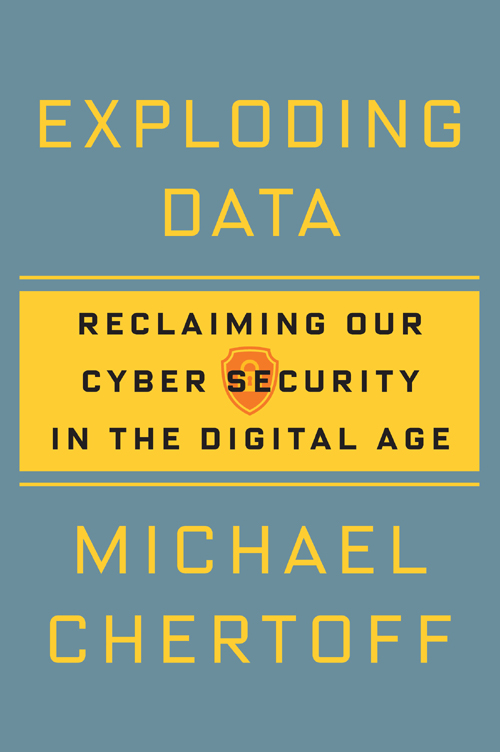Homeland Security: Assessing the First Five Years
EXPLODING
DATA
RECLAIMING OUR
CYBER SECURITY
IN THE DIGITAL AGE
MICHAEL
CHERTOFF

Copyright 2018 by Michael Chertoff
Cover design by Daniel Rembert
All rights reserved. No part of this book may be reproduced in any form or by any electronic or mechanical means, including information storage and retrieval systems, without permission in writing from the publisher, except by a reviewer, who may quote brief passages in a review. Scanning, uploading, and electronic distribution of this book or the facilitation of such without the permission of the publisher is prohibited. Please purchase only authorized electronic editions, and do not participate in or encourage electronic piracy of copyrighted materials. Your support of the authors rights is appreciated. Any member of educational institutions wishing to photocopy part or all of the work for classroom use, or anthology, should send inquiries to Grove Atlantic, 154 West 14th Street, New York, NY 10011 or .
FIRST EDITION
Published simultaneously in Canada
Printed in the United States of America
First Grove Atlantic hardcover edition: July 2018
Library of Congress Cataloging-in-Publication data is available for this title.
ISBN 978-0-8021-2793-8
eISBN 978-0-8021-6578-7
Atlantic Monthly Press
an imprint of Grove Atlantic
154 West 14th Street
New York, NY 10011
Distributed by Publishers Group West
groveatlantic.com
18 19 20 21 10 9 8 7 6 5 4 3 2 1
For Meryl, Emily, and Philip, and for those who serve
O N THE MORNING OF SEPTEMBER 11, 2001 , while I drove to my Washington, D.C., office as assistant U.S. attorney general in charge of the Department of Justice Criminal Division, my deputy called to tell me that an airplane had crashed into New York Citys World Trade Center. Our initial assumption was that a private-plane pilot had lost his way. But within minutes, the TV news reported a second plane had smashed into the twin towers. Thats when we realized America was under attack.
Within minutes we were at the FBI Strategic Information and Operation Center, working with the FBI director to piece together who was attacking us andimportantlyhow to prevent further strikes. As we began to pull together the facts, we learned a third aircraft had crashed into the Pentagon. A fourth plane, United Flight 77, had also been hijacked and was headed to Washington, D.C. The order was relayed to fighter jets to shoot down the plane; that became unnecessary after the passengers heroically stormed the cockpit and forced down the jet in Shanksville, Pennsylvania. America was at war.
Over the next hours and days, we pieced together the identities of the hijackers and concluded that al Qaeda was carrying out its declaration of war against America. Shortly after the attacks, President George W. Bush told the attorney general, Dont let this happen again. That became our mandate.
This war was different from previous conflicts. Our enemies wore no uniforms and flew no flags; they sought to sneak up on us in the guise of ordinary civilians. Their weapons were homemade explosives. They mingled with the flow of travelers. Against this concealed attacker, radar that we relied upon to warn against enemy missiles or bombers was of no use.
How, then, to detect other terrorists and prevent them from carrying out attacks? We quickly concluded the answer lay in collecting large amounts of information about travelers and foreigners, and discerning the connections and behavior that showed links to a terror network. That meant not only reorienting our intelligence agency to focus on detecting the outlines of the terror network, but also obtaining the capability to detect patterns in the vast amounts of data being collected.
This paradigm shift in national security coincided with the expansion of the internet and the growth of commercial enterprises devoted to using data analytics for marketing and credit-scoring purposes. The private sector, infused with the urgency of preventing further attacks, began to develop new strategies to find the terrorist needle in the haystack. As the same time, the intelligence community expanded our data haystacks, using new or repurposed legal authorities (including the USA PATRIOT Act, which I participated in drafting) to accumulate information about the global flow of money, people, and communications. Over the next several years, as head of the Department of Justices Criminal Division and later as U.S. secretary of homeland security, I saw the awesome power of expanded data collection and analytics as tools to protect our nation and its people.
Not surprisingly, these new capabilities began to be deployed for other purposes, including commercial objectives. Just as the civilian internet was spawned by a Defense Department research effort, data collection and analytic tools used in counterterrorism were applied for a host of commercial purposes. Because I was witness to a major turning point in the growth of increasingly pervasive surveillance and the revolution in data collection, storage, and analysiscalled big data by manyI was acutely aware of the power of data collection and analytics to benefit society. I also knew this information-gathering revolution would challenge Americas traditional notions and values in the areas of privacy and liberty.
As time has passed, I have been professionally and personally involved in guiding, prompting, using, and worrying about the ever-expanding harvesting of personal data by both governments and, even more so, the private sector. Perhaps more than most, I understand how much data each of us now generates for collection. That can be beneficial. It can also be very dangerous.
Having spent most of my professional career as a lawyer and as a judge, I am also mindful that our legal rules and policies established how these vast new capabilities would be deployed; yet most of this legal framework was created in the 20th century, when the data landscape was far sparser than it is today. As one who wants to encourage the positive effects of the data revolution, I believe that we are overdue to recast the rules of the road. To be sure, this data revolution should preserve, rather than undermine, our fundamental values.
This book is designed to educate the interested citizen about the scope and implications of the revolution in data generation, collection, and analytics. I also lay out a vision to retain the security and economic benefits of these developments without unwittingly sacrificing our privacy, liberty, and civic values. To illustrate how rapidly this change is coming upon us, here are four hypothetical but realistic scenariosthree of which are already upon us.
One: A young New Yorker, Alan, becomes interested in the ideology of radical jihadism. After searching the internet, he happens upon a website managed by recruiters for a terrorist organization in Syria. The terrorists detect Alans interest and make contact with him by sending an email to his Internet Protocol (IP) address with instructions on how to anonymize communications by downloading free software. With excitement, he steps into the shadows.
Although Alan follows the jihadis instructions, he also begins to discuss his increasing radicalization with friends on Facebook. He posts pictures of himself with a beard and wearing a

